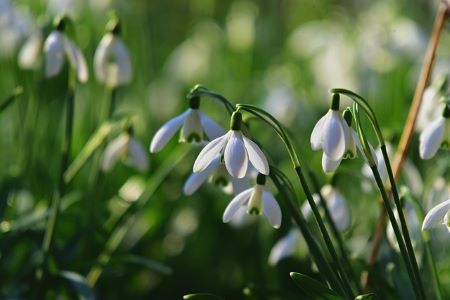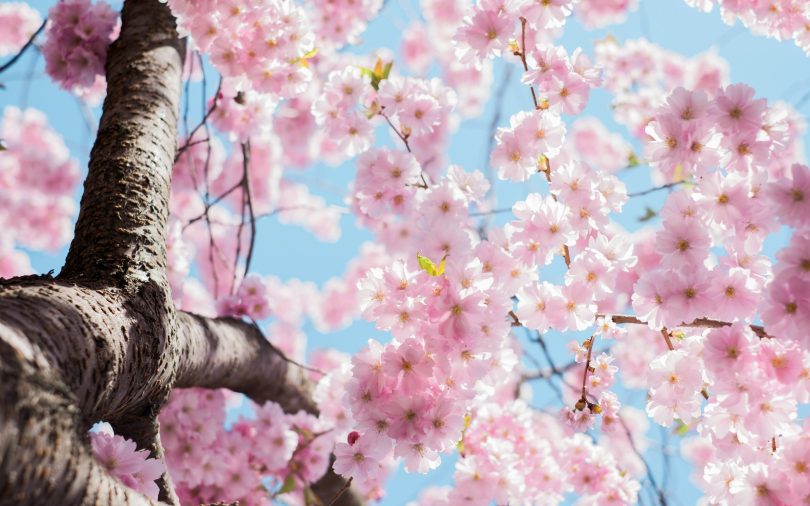According to Ayurveda, one of the keys to maintaining health is to practice ritucharya—aligning ourselves with the rhythms of nature and adopting seasonal routines. Adjusting our daily self-care rituals to seasonal changes not only helps us maintain balance but also serves to remind and connect us with the natural world of which we are a part.
I am always both fascinated and in awe of the depth of ancient knowledge of our ancestors and how richly rooted it still is in the culture of India. Life here really is a celebration, and all the festivals and rituals are reflective of and in precise alignment and honour of these changes in nature on all levels – physical, energetic, and spiritual – while taking into account the mind, body, and soul. We have just passed the new moon in March and the festival of Shivaratri, honouring and harnessing the special energies available at this time. We are now leading up to the full moon, which marks the beginning of spring and the well-known “Holi” festival of colour – a celebration of life, renewal, fertility, and abundance.

Holi is a time of cleansing and purification—on a physical level—as the weather changes and typically damp weather, increase in pollen, mould, and so on can cause illness and allergies. However, Holi also means “sacrifice” and is symbolic of burning all the impurities of the mind, such as ego, vanity, and lust, through the fire of devotion and knowledge. It is a time to change the energy to the renewed spirit of spring, fertility, and abundance and ignite cosmic love, mercy, generosity, selflessness, truthfulness, and purity through the fire and energy (tapasya) of Yogic & spiritual practice. This is the real spirit of Holi—a literal “spring clean” on all levels.

Spring is a time of fertility, abundance, and nature bustling with preparations for a birthing process—of animals, plants, and flowers. The seeds planted last year are about to emerge from their gestation phase and burst forth in abundance, marking the long-awaited return of the light and energy of the sun.
Indeed, the first signs of this life force energy springing forth are the initial flowers, such as snowdrops, followed by crocuses, tulips, hyacinths, and daffodils. These blossoms begin to appear alongside the subtle changes in sunlight and the lengthening of days, noticeable as early as February.

 Mabel Amber, who will one day from Pixabay
Mabel Amber, who will one day from PixabayLiving in the UK, I recall the sensation as the tight grip of winter finally begins to loosen, bringing a sense of relief and hope. The delight at witnessing the first buds and flowers emerging, displaying their array of colour and fragrance.
Spring is a time of transition and change, a period for clearing out the old and welcoming the new. It’s an opportunity for spring cleaning, reflecting on what to let go of, and making space for progress in all aspects of life – physical, mental, and spiritual.

What seeds of intention will you sow for the upcoming weeks and months?
The energy strongly supports us during this time, so it’s worthwhile spending time contemplating, meditating, journaling, and planning.
The new season of Spring brings a renewed spring in our step and is characterised by Kapha dosha, related to the elements of earth and water, whose qualities are typically heavy, cool, soft, dense, stable, solid, and cloudy. *The lethargy and hibernation of winter are starting to dissipate, and in this season, we crave and require time in nature, fresh fruits, and increased activity.

To adjust for the season, consider the following practices:
Wake with the sunrise. One of the best practices to minimize the heavy quality of kapha in the mind and body is to wake with the sun (around 5:30/6am this time of year – depending on where you live). Dawn is ruled by vata and is light, clear, and subtle – so get going with this energy to have increased vitality throughout the day.
Get moving. When kapha is dominant in the day, the muscles are strongest between 6:00 and 10:00 am. Get outside for a brisk walk or do some vigorous yoga asana practice, such as surya namaskar (sun salutations), to help melt away excess kapha. Kapalabhati and Bhastrika pranayama are also great ways to increase heat, invigorate, and stoke the fires of digestion.
Eat lighter foods. In the winter months, we naturally gravitate toward heavier, sweet, sour, and salty foods to mitigate the dry, light qualities of the cold season. This can cause kapha accumulation in the physical body. To lighten up, try foods that are pungent, bitter, and astringent, including kale, collards, dandelion, spinach, and mustard greens; strawberries, cherries, and blueberries; fresh green peas; and barley, quinoa, and millet. Switch to organic brown rice (if you haven’t already) – a much healthier option than white rice and helps improve digestion too.



